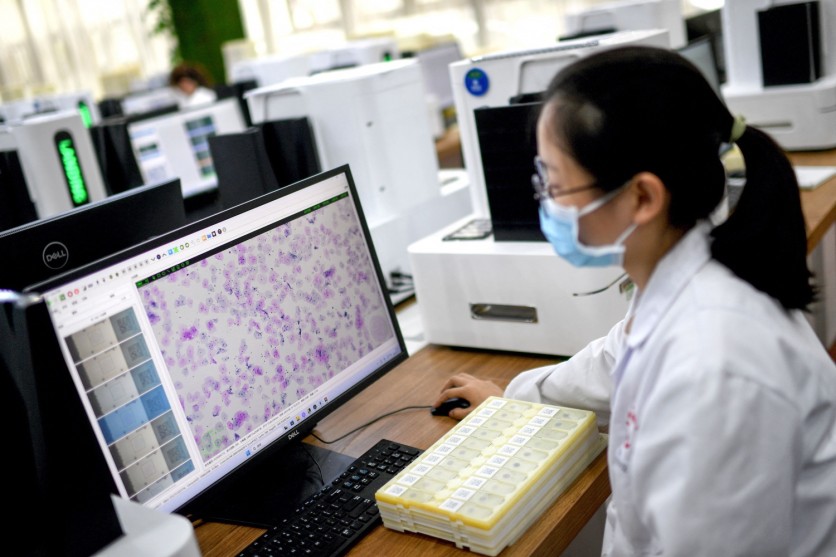
Scientists at Sweden's University of Gothenburg have developed an AI-driven method to detect early-stage cancer.
The new test is poised to be a game-changer in cancer prognosis as it is non-invasive, offers improved accuracy, and can pick up different cancers, including lung, liver, and skin cancer. Until now, scientists have relied on mass spectroscopy to identify biochemical signals that may hint at tumors in a patient's body. However, in a recent study, researchers relied on an AI-driven method to analyze data and achieved greater reliability.
"Spectroscopy results are mostly homogenous and often lack sensitivity to gauge critical data points," Daniel Bojar, associate senior lecturer in bioinformatics at the University of Gothenburg and lead author of this study, told Tech Times in an interview. "AI comes with advanced analytics to ensure consistency in glycan structures. That's how we can accurately measure glycans and their structural changes over time."
Bojar says they should be able to produce clinical tests and launch on a mass scale in the next 4-5 years. The team is also looking to expand the cancer types involved in the study to improve the reliability of their research.
Glycans: The Next Big Thing in Cancer Detection
In 2020, around 19.3 million people worldwide were diagnosed with cancer, and this is expected to rise to 28.4 million by 2040. Currently, there are no cures for cancer, but finding and treating it early usually leads to better outcomes. Scientists are always looking for faster ways to spot cancer.
The new cancer test depends on detecting defined glycans, which are long sugar chains attached to fats and proteins that also dictate how our cell behaves. These complex sugar molecules are one of the four major macromolecules essential for life, the other three including DNA, proteins, and fats. Changes in Glycome structures can be tied to inflammation, food allergies, diseases like rheumatoid arthritis and cancer, and even natural processes like aging.
There have already been numerous reports on the elevated presence of N-glycan structures in breast cancer patients, but they are absent in healthy tissues. Moreover, a glycan-based blood test to detect ovarian cancer is already in early human trials.
"Glycans are mostly the first point of contact for all kinds of cellular interactions. Naturally, mutations in these glycans can trigger different responses by cells to a single stimulus by modifying proteins that sit in the cell," Emmanuel Maverakis from the University of California, Davis, told Tech Times in an interview. "The glycan changes act as unique "fingerprints" for specific cancer types."
The other reason glycans are considered the next big thing in cancer research is because of their presence in easily detectable locations like spit, blood, and urine, allowing doctors to monitor cancerous cells without performing invasive cancer screening tests like endoscopy or biopsy. This reduces discomfort and risk for patients while broadening testing possibilities.
The Potential of AI In Cancer Prognosis
The researchers at Gothenburg are not the only ones to use AI in cancer detection. As of now, the FDA has approved more than 300 AI tools for radiology and oncology to help doctors predict, diagnose, and treat cancer, especially in the early stages.
AI's potential to reform cancer detection lies in its ability to analyze vast amounts of diverse data and biomarkers, including genetic profiles, medical history, and real-time physiological measurements. The early prognosis can be supplemented by personalized treatment plans with optimal dosage for each patient, ensuring maximum benefit with minimal risk.
Researchers at MIT have developed Sybil, an AI tool to predict the risk of lung cancer development in the next six years of screening. The accuracy of Sybil was between 86-94%, a significant uptick from the current cancer screening regime.
Sybil relies on CT scans to look for signs of tumors, abnormal growth, and even hidden patterns without the presence of any significant nodules that might be overlooked by human eyes.
Similarly, a coalition of scientists from Dana-Farber Cancer Institute, Harvard Medical School, and the University of Copenhagen have developed AI software to identify patients who are at risk of early-stage pancreatic cancer. AI can analyze biomarkers such as gene expression profiles and protein levels to identify signs of cancer. These biomarkers can be used to develop new diagnostic tests and targeted therapies.
We are looking at times when AI will be able to detect cancer with a simple click while eliminating the need for back-to-back tests and aiding the decision-making prowess of oncologists.
"The future of oncology is going to be AI-assisted," Florian Fintelmann, one of the scientists working on Sybil, told Tech Times in an interview.
However, the integration of AI tools in radiology isn't without its challenges. Healthcare professionals globally have already raised concerns about inconsistent datasets, breaches of patient privacy, and regulatory scrutiny. The challenges echo louder when AI systems tend to hallucinate and produce false positives to arrive at wanted or more desirable conclusions.
Avya Chaudhary is a technology writer whose work has appeared in TechRepublic Premium, PageFly, TechnologyAdvice, and Hatica. Find her on LinkedIn at https://www.linkedin.com/in/avya-chaudhary.
ⓒ 2025 TECHTIMES.com All rights reserved. Do not reproduce without permission.




